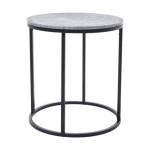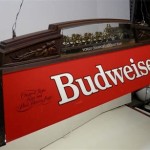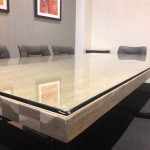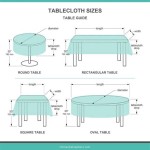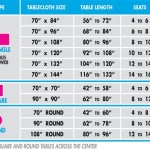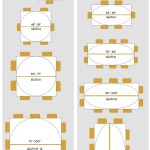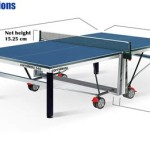Wall Mounted Baby Changing Table Plans: A Comprehensive Guide
Wall mounted baby changing tables offer a space-saving solution for homes, nurseries, and public restrooms. These tables provide a safe and convenient platform for diaper changes, while their foldable design allows them to be tucked away when not in use. Implementing a successful wall mounted baby changing table project requires careful planning and adherence to appropriate plans. This article delves into the essential aspects of wall mounted baby changing table plans, offering a detailed overview of material selection, structural considerations, safety standards, and installation procedures.
Understanding the Core Components of Wall Mounted Baby Changing Table Plans
Developing effective plans for a wall mounted baby changing table necessitates a thorough understanding of the components involved. These components ensure the structural integrity, safety, and overall functionality of the unit. Key elements to consider include the mounting structure, the changing platform, the support mechanism, and the safety features.
The mounting structure is the backbone of the entire system. It is responsible for securely attaching the changing table to the wall and bearing its entire weight when in use. The design of the mounting structure must account for the load bearing capacity of the wall and the overall weight of the table and the baby. Typically, this involves a sturdy frame constructed from wood, metal, or a combination of both. The frame needs to be securely anchored to the wall studs using appropriate hardware.
The changing platform is the surface on which the diaper changes occur. Its dimensions should be sufficient to comfortably accommodate a baby and provide enough workspace for necessary changing supplies. The platform material should be durable, easy to clean, and non-toxic. Common choices include high-density polyethylene (HDPE), durable wood, or laminated surfaces. Ensuring the platform surface is smooth and free of sharp edges is vital for the baby's safety.
The support mechanism is what allows the platform to fold up and down smoothly and securely. Hinges, struts, or gas springs are typically used to provide the necessary support and controlled movement. The support mechanism should be robust enough to withstand repeated use and prevent the platform from collapsing unexpectedly. Regular maintenance and inspection of the support mechanism are recommended to ensure its continued safety and reliability.
Safety features are paramount in any baby changing table design. These features are designed to prevent falls and ensure the baby's security during diaper changes. Common safety features include safety straps, high sides, and rounded edges. The safety straps safely secure the baby to the changing surfaces. The high sides prevent accidental roll-off, and rounded edges mitigate the risk of injury from bumping against the table.
Material Selection and Structural Integrity
The selection of appropriate materials is crucial for the durability and safety of a wall-mounted baby changing table. The materials must be strong enough to support the weight of the baby and the changing supplies, and they must also be resistant to wear and tear. Considerations must be made regarding the structural integrity of the table to ensure it can withstand repeated use without compromising safety.
Wood is a commonly used material for the frame and platform of wall-mounted baby changing tables. Hardwoods like maple, oak, and birch are preferred for their strength and durability. However, softwoods like pine can also be used if properly reinforced. When using wood, it is important to ensure that it is properly sealed and finished to protect it from moisture and bacteria.
Metal is another popular choice, particularly for the mounting structure and support mechanism. Steel is strong and durable, and it can be easily welded or bolted together. Aluminum is lighter than steel, but it is still strong enough for many applications. When using metal, it is important to ensure that it is properly coated to prevent rust and corrosion.
High-density polyethylene (HDPE) is also an increasingly common material for the changing platform. HDPE is durable, easy to clean, and resistant to bacteria. It is also non-toxic and safe for use around babies. HDPE is often used in commercial settings where hygiene is a top priority.
Structural integrity is equally important. The plans should include detailed specifications for the dimensions and placement of all structural components. The mounting structure should be securely anchored to the wall studs. The platform should be adequately supported by the support mechanism. The entire assembly should be able to withstand the maximum weight of the baby and the changing supplies without any signs of stress or deformation.
Prior to construction, it is beneficial to conduct a structural analysis to verify the integrity of the design. This can be done using computer-aided design (CAD) software or by consulting with a structural engineer. The analysis should take into account the weight of the baby, the changing supplies, and any potential impact loads.
Safety Standards and Compliance
Adhering to relevant safety standards is paramount when designing and constructing a wall mounted baby changing table. These standards are designed to minimize the risk of injury to the baby and ensure the table is safe to use. Several organizations and regulatory bodies establish safety standards for baby changing tables, including ASTM International and the Americans with Disabilities Act (ADA).
ASTM International develops voluntary consensus standards for a wide range of products, including baby changing tables. The ASTM standard for baby changing tables, ASTM F2285, specifies requirements for the design, construction, and testing of these products. Compliance with ASTM F2285 ensures that the changing table meets minimum safety requirements. For example, ASTM F2285 mandates that the table must be able to support a certain weight and must have restraints to prevent the baby from falling.
The Americans with Disabilities Act (ADA) sets accessibility standards for public accommodations, including restrooms. These standards include requirements for the installation and placement of baby changing tables. ADA guidelines specify the height at which the changing table should be mounted and the amount of clear floor space that should be provided around the table. Compliance with ADA guidelines ensures that the changing table is accessible to individuals with disabilities.
In addition to complying with mandatory standards, it is also important to incorporate best practices for safety into the design of the changing table. This includes using non-toxic materials, rounding off sharp edges, and providing adequate padding on the changing surface. Regular inspections of the table are also recommended to identify and address any potential safety hazards.
Implementing a robust safety checklist during the design and construction phases can significantly minimize the risk of accidents. This checklist should cover all aspects of the design, from material selection to installation. It should also include procedures for testing the table to ensure it meets all relevant safety standards.
Detailed Installation Procedures
Proper installation is essential for the safety and stability of a wall mounted baby changing table. Installation should be performed by a qualified individual with experience in carpentry and construction. Neglecting this aspect can result in structural failure and potential serious injuries. The installation process involves several key steps, including wall preparation, mounting the frame, attaching the platform, and testing the stability.
The first step in the installation process is to prepare the wall. This involves locating the wall studs and marking their positions. Wall studs are the vertical framing members that provide structural support for the wall. The mounting structure of the changing table must be securely attached to the wall studs to ensure it can support the weight of the table and the baby. A stud finder can be used to locate the wall studs. Once the studs have been located, drill pilot holes through the wall and into the center of the studs.
The next step is to mount the frame to the wall. Align the frame with the pilot holes and insert screws or bolts through the frame and into the studs. Use a level to ensure the frame is plumb and level. Tighten the screws or bolts securely, but do not overtighten them. Overtightening can strip the threads or damage the wall studs.
After the frame is mounted, the platform can be attached. Align the platform with the frame and attach it using hinges or other appropriate hardware. Ensure the platform can fold up and down smoothly and securely. Test the support mechanism to ensure it can hold the weight of the platform and the baby. If gas springs are used, ensure they are properly installed and adjusted to provide the correct amount of support.
The final step is to test the stability of the changing table. Apply weight to the platform to simulate the weight of a baby. Check to see if the table is stable and does not wobble or flex excessively. If any instability is observed, reinforce the mounting structure or adjust the support mechanism. Also, ensure that any safety straps are properly installed and functional.
Following installation, regular inspections are crucial to ensure the continuing safety of the changing table. Inspect the mounting hardware, hinges, and support mechanism for any signs of wear or damage. Tighten any loose screws or bolts. Replace any worn or damaged parts immediately. Regular maintenance and inspections can help prevent accidents and ensure the changing table remains safe for use.

Fold Down Baby Changing Table From Swedish Space Saving 9 Steps Instructables

Home Dzine Diy Wall Mounted Baby Changing Station

Home Dzine Diy Wall Mounted Baby Changing Station

Fold Down Baby Changing Table From Swedish Space Saving 9 Steps Instructables

Open View Baby Changing Tables Table

Decorating Ideas Baby Changing Station Room Diy Stuff

25 Free Diy Changing Table Plans Anyone Can Build Suite 101

25 Free Diy Changing Table Plans Anyone Can Build Suite 101

Baby Changing Station Comfortable And Helpful Nursery Room Furniture Tables Table Wall Mounted

25 Free Diy Changing Table Plans Anyone Can Build Suite 101

